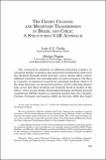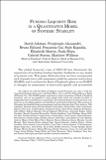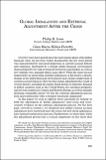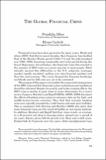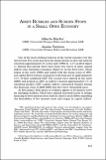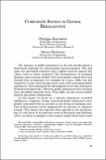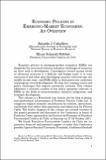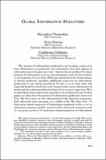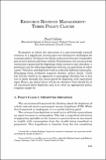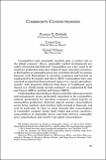Buscar
Mostrando ítems 11-20 de 123
The credit channel and monetary transmission in Brazil and Chile: a structured VAR approach
The widespread adoption of inflation-targeting regimes by emerging market economies has generated considerable interest in the channels through which monetary policy shocks affect output inflation and other relevant aggregates in such economies. Yet there is a paucity of empirical research for emerging ...
Funding liquidity risk in a quantitative model of systemic stability
The global financial crisis of 2007–09 has illustrated the importance of including funding liquidity feedbacks in any model of systemic risk. This paper illustrates how we have incorporated such channels into a risk assessment model for systemic institutions (RAMSI) and it outlines the Bank of England’s ...
Global imbalances and external adjustment after the crisis
Over five years have passed since the most intense phase of the global financial crisis. As has been widely documented the pre-crisis period was characterized by increased dispersion in current account deficits and surpluses facilitated by a benign global financial environment characterized by low ...
The global financial crisis
Financial crises have been pervasive for many years. Bordo and others (2001) find that in recent decades their frequency has doubled that of the Bretton Woods period (1945–71) and the gold standard era (1880–1993) becoming comparable only to the period during the Great Depression. Nevertheless the ...
Asset bubbles and sudden stops in a small open economy
One of the most striking features of the world economy over the last twenty-five years has been the sharp decline in the real interest rate from approximately 4% in the early 1990s to -1.5% in 2013 (figure 1). During this period there have been two waves of large capital inflows into emerging economies ...
Corporate saving in global rebalancing
The increase in global imbalances in the last decade posed a theoretical challenge for international macroeconomics. Why did some less developed countries with a higher need for capital like China lend to richer countries? The inconsistency of standard dynamic open-economy models with actual global ...
Economic policies in emerging-market economies: an overview
Economic policies in emerging-market economies (EMEs) are shaped by the structural features and policy challenges of countries on their road to development. Convergence toward income levels of advanced countries is a difficult and bumpy road—it is even uncertain if and when most developing countries ...
Global information spillovers
The amount of information produced in an economy varies over time. Stock prices in particular are informative but their degree of informativeness changes over time. Agents do not produce the same amount of information in every macroeconomic state of the world or in anticipation of every state. Although ...
Resource revenue management: three policy clocks
Economies in which the extraction of a non-renewable natural resource is a significant activity pose two distinctive challenges for economic policy: Revenues are likely to fluctuate because commodity prices have historically been volatile. Furthermore the revenue from extraction is generated by depleting ...
Commodity connectedness
Commodities and commodity markets play a central role in the global economy. Hence commodity market developments are widely chronicled and followed. Commodities are a key input to all countries’ production and a key output of many emerging economies so fluctuations in commodity prices may contribute ...

